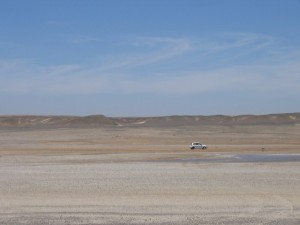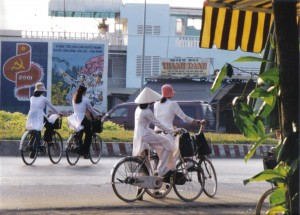Currently around 66% of the worlds population live in countries which drive on the right side of the road, usually (but not always) in vehicles with the drivers seat on the left.
There are 76 countries, territories and dependencies which drive on the left.
There are numerous theories as to why some countries drive on the left and some on the right. Though no one knows the exact reasons for sure, it seems likely that travelling on the left of the road became the obvious choice in ancient times. Indeed Roman coins from 50AD have been found which depict horsemen passing on each other’s right. Horse travel in often violent times is the key to why driving on the left became popular. A horse rider would carry their sword in a scabbard on their left hand side , which they would draw, and use with their right hand. It therefore made sense for the right arm, when wielding the sword to be nearer a potential opponent and further away when in the scabbard. That made travelling on the left the safest and most obvious method.
Also , right handed people generally mount a horse from the animals left, and it would be hard to do otherwise if wearing a sword on the left. Obviously, it’s safer to mount and dismount at the side of the road rather than in the centre , so if a rider mounts on the left it would make sense for the horse to then be ridden on the left.



A change to the left hand driving trend occurred in the late 1700s. In the USA and some European countries, including France large wagons pulled by several horses began to be used to transport products. These wagons had no driver’s seat; instead the driver sat on the left rear horse, (called postilion riding) so he could keep his right whip arm free to lash the team. Since he was sitting on the left, the driver has the best view of the distance between his vehicle and oncoming traffic by keeping to the right. Also, the French Revolution of 1789 helped the shift to right-hand travel in Europe. Before the revolution it was customary for the aristocracy to travel on the left of the road and force slower moving peasant traffic over to the right. After the storming of the Bastille, aristocrats adopted a lower profile when travelling and joined the peasants on the right.Later , As Napoleon conquered nations he would force them to adopt driving on the right which spread the right hand trend through Europe .
In spite of the shift to driving on the right, Britain stuck with the left hand driving rule and countries which were part of the British Empire were made to followsuit. This is why India, Australasia and the former British colonies in Africa continue to drive on the left. One exception is Egypt, as that country was conquered by Napoleon before becoming a British dependency.Other colonies also adopted the driving style of their mother country.
Dutch traders landed in Indonesia in 1596, and imported their then rule of driving on the left. It wasn’t until Napoleon conquered the Netherlands that the Dutch started driving on the right. Most of their colonies, however, remained on the left as did Indonesia and Suriname.
Some countries continued to switch sides right up to modern times.Sweden only moved to driving on the right after a referendum in 1967 and Iceland changed the following year. Ghana swapped sides in 1974.On 7 September 2009 Samoa became the third country ever to change from right- to left-hand driving for the down to earth reason that it made it easier to import cheap cars from left-hand driving Japan, Australia and New Zealand.
The following are countries which drive on the left. The remainder drive on the right.The majority of left hand driving nations drive cars with the driving seat on the right.However, there are some countries, notably some Caribbean Islands which drive on the left but most cars are imported from the USA, and are therefore left hand drive, which can make overtaking a tricky manoeuvre.
List of Left Hand Driving Countries (All others drive on the right)
Anguilla
Antigua and Barbuda
Australia
Bahamas
Bangladesh
Barbados
Bermuda
Bhutan
Botswana
Brunei
Cayman Islands
Christmas Island
Cook Islands
Cyprus
Dominica
East Timor
Falkland Islands
Fiji
Grenada
Guyana
Hong Kong
India
Indonesia
Ireland
Jamaica
Japan
Jersey
Kenya
Kiribati
Lesotho
Macau
Malawi
Malaysia
Maldives
Malta
Mauritius
Montserrat
Mozambique
Namibia
Nauru
Nepal
New Zealand
Niue
Norfolk Island
Pakistan
Papua New Guinea
Pitcairn Islands
Saint Helena
Saint Kitts and Nevis
Saint Lucia
Saint Vincent and the Grenadines
Seychelles
Singapore
Solomon Islands
South Africa
Sri Lanka
Suriname
Swaziland
Tanzania
Thailand
Tokelau
Tonga
Trinidad and Tobago
Turks and Caicos Islands
Tuvalu
Uganda
United Kingdom
Virgin Islands
Zambia
Zimbabwe







15 comments